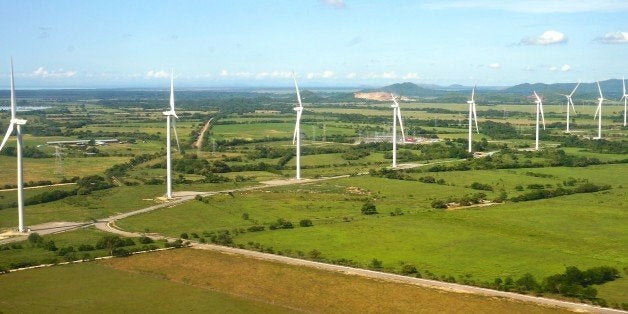
Tomorrow morning, Pope Francis will kick off the UN General Assembly's session on the Sustainable Development Goals (SDGs) and by the end of the day, the world's leaders will have affirmed the 17 goals. This is a momentous occasion, worth celebrating, but the hard work begins on Monday morning. That's when the focus shifts from what to how.
The first 16 goals cover a range of critical development needs, expanding on the Millennium Development Goals, which have guided development efforts since 2000. The final SDG is qualitatively different. Rather than expound on what we want to achieve, it addresses how we will achieve the goals. It focuses on the means of implementation.
What will it take? Essentially, knowledge, financing and partnership. The first exists in abundance. While ongoing technological and conceptual breakthroughs will undoubtedly help, we already have sufficient experience, know-how and technical expertise to remedy the biggest problems that afflict the world's poor, under-served and vulnerable. The problem is how to finance these solutions and how to come together in partnership to implement them speedily and effectively when and where they are needed.
How big is the financing challenge? Together with the IMF and other multilateral development banks, the World Bank Group coined the phrase "Billions to Trillions" to illustrate the scale of the global-development challenge. Given the enormity of the task ahead, we need to break it down and identify what is already working and where we need to improve.
What is working? First, we have a new consensus that private enterprise is the main source of economic growth and job creation, and that private capital is vital for attainment of the SDGs. When the development community met this past July in Addis Ababa for the Third International Conference on Financing for Development, there was one stark difference from previous gatherings in Doha and Monterrey: unequivocal acceptance that the financing will have to come from private as well as public resources.
Leaders across the spectrum (government, business, finance, academia, civil society, foundations) recognize that, in today's world, financial flows to developing countries are directed more by private actors than by donor countries. In 2014, for instance, Official Development Assistance stood at about $135 billion, substantially less than foreign direct investment of approximately $680 billion and remittances of about $430 billion.
At the International Finance Corporation (IFC), we have witnessed these shifts first-hand. We have also learned that it is possible to make superior risk-adjusted returns while also having a strong development impact, and this has enabled us to catalyze additional commercial capital for the private businesses we fund. Six years ago, we established the IFC Asset Management Company, a third-party fund-management platform now managing more than $8 billion in assets, which allows us to marry commercial capital with development needs.
What more is needed? Just as important as the finance is the need to bring together the right partners so we can leverage scarce official flows as much as possible. We need to work closely with those operating partners, especially domestic ones, who are best placed to deliver better infrastructure, higher growth and more jobs.
Given the diverging scale of public and private flows, an increasingly important issue for donor countries is how to use limited resources to achieve maximum "bang for the buck." A number of donors are looking to devote more of their assistance budget to private-sector development and to the mobilization of private flows, including through partnerships with their fellow donors.
An example is the Canadian-sponsored Convergence, which launched in July as a global platform for public and private investors to connect, develop and support blended finance investments in developing countries. It includes an online marketplace, a new product design facility with collaborative workshops and grant funding, and tools such as a historic database of blended-finance deals and a directory of intermediaries who can assist in implementation.
Tomorrow, as part of the UN Sustainable Development Summit, IFC will be co-hosting the SDG Business Forum in partnership with the International Chamber of Commerce, World Economic Forum and UN Global Compact. The aim is to bring business and financial leaders to the forefront of the SDG discussion, with an eye on the 17th goal of implementation -- the means to achieve all the other goals.
The SDGs are not far-flung targets. The deadline is 2030, 15 short years away. It is therefore not just critical, but urgent, that we move from the what to the how -- and that we start today. The world cannot wait until Monday.
This post is part of a series produced by The Huffington Post, "What's Working: Sustainable Development Goals," in conjunction with the United Nations' Sustainable Development Goals (SDGs). The proposed set of milestones will be the subject of discussion at the UN General Assembly meeting on Sept. 25-27, 2015 in New York. The goals, which will replace the UN's Millennium Development Goals (2000-2015), cover 17 key areas of development -- including poverty, hunger, health, education, and gender equality, among many others. As part of The Huffington Post's commitment to solutions-oriented journalism, this What's Working SDG blog series has focused on one goal every weekday in September. This post addresses all 17.